#buddhist pilgrimages in India
Explore tagged Tumblr posts
Link
Buddhist pilgrimage sites in India
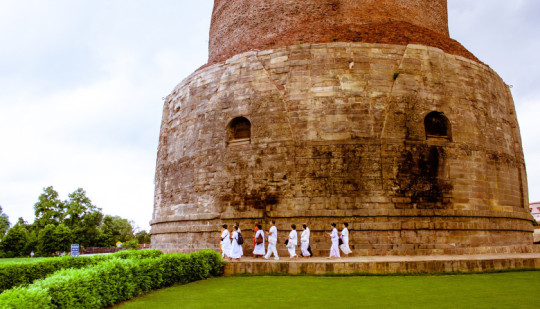
Buddhism is a religion and philosophy founded in ancient India by Siddhartha Gautama, also known as the Buddha. It is based on the teachings of the Four Noble Truths and the Eightfold Path, and it emphasizes the importance of moral conduct, mindfulness, and the cultivation of wisdom. Today, Buddhism is practiced by millions of people around the world, and it has had a significant influence on many aspects of Asian culture, including art, literature, and architecture.
India is home to many important "Buddhist pilgrimage sites", which are places that are considered to be sacred by Buddhists and are visited by believers as a way to show devotion and seek spiritual enlightenment. These sites are often associated with the life and teachings of the Buddha, and they can include temples, monasteries, stupas, and other historical and cultural landmarks.
Here are 10 of the most significant Buddhist pilgrimage sites in India:
Read more at Buddhist pilgrimage sites in India
#Buddhist pilgrimage sites in India#Buddhist pilgrimages#buddhist pilgrimages in India#Buddhist pilgrimages sites#10 must visit buddhist sites in India#Gautam Buddha#bodhgaya#bodhi tree#Buddhist tours#Buddhist pilgrimages tours in India#India Nepal Buddhist sites#alkofholidays
1 note
·
View note
Text
Best holiday packages in india
Are you looking for the best holiday packages in india? If yes, Glorious India Tours is one of the best choices for you. We provide holiday packages in india. We have many years of experience in this field. For more information call us at 9818590099 or visit the official website.
#best holiday packages in india#rajasthan heritage tour#Best tour destination of India#all india pilgrimage tour packages#buddhist pilgrimage tour
5 notes
·
View notes
Text
#travel#buddhist tour packages india#buddhist pilgrimage tour packages#buddhist travel#monastery buddhist#buddhisttemple#varanasitour#sarnath#tourist#hong kong#singapore#south korea#japan tourism
0 notes
Text




#Buddhism in India, Buddhism religion is regarded as one of the three top most widespread major religion of the world. Buddhism was founded by the #historical Buddha Shakyamuni or Lord #Gautama, dated back to 5th or the 6th centuries B.C.E.
#tour operator in delhi#travel agent in delhi#golden triangle package#travel agency in india#travel agency in delhi#travel agents in delhi#Buddhist Pilgrimage tour
1 note
·
View note
Text
Welcome to The Journey to the West (西游记) Daily!
You are about to beging a reading journey to get the hidden Buddhist texts accompanied by the monk Tang Sanzang, Sun Wukong, Sha Wujing, Zhu Bajie and Bai Long Ma.
To beging this journey you must subscribe to the newsletter, which you will find at https://journeytothewestdaily.substack.com/. You wil receive your first email this week, welcoming you and sharing information about what's to come and what I will include in the emails.
However, beforehand I want to tell you already that you won't receive a daily email, despite the name of the newsletter. The chapters are dense and full of references to folklore or religion references that you might be unfamiliar with, so you will receive an email every 2 or 3 days maximum.
If this is the first time that you hear about this newsletter and you don't know what Journey to the West is...
The classical Chinese novel Journey to the West is an extended account of the legendary pilgrimage of the Tang dynasty Buddhist monk Xuanzang, who traveled to the "Western Regions" (Central Asia and India) to obtain Buddhist sūtras (sacred texts) and returned after many trials and much suffering. Gautama Buddha gives this task to the monk, whose name in the novel is Tang Sanzang, and provides him with three protectors who agree to help him as an atonement for their sins. These disciples are the Monkey King, Zhu Bajie, and Sha Wujing, together with a dragon prince who acts as the monk's steed, a white horse. The group of pilgrims journey towards enlightenment by the power and virtue of cooperation.
The novel is perfect for the epistolary format, since it's is divided in different and disconnected adventures, so you don't have to always remember what happened in the previous chapter to read the next!
We'll be reading Anthony C. Yu's translation since it is the first unabridged version that we have available in English. It is about 100 chapters long.
As I said, you will receive a first email as soon as you subscribe and an introductory email in a few days. Please, share this post so more people can read along. Use the hashtag #jttwdaily if you want to comment your impressions. I'll share the most important dates soon.
May the Buddha help you in your endeavours.
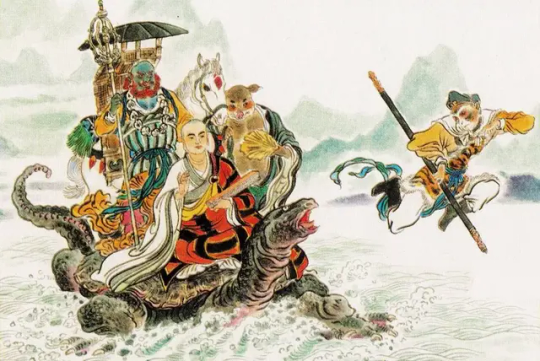
#journey to the west#journey to the West daily#jttwdaily#西游记#Dracula daily#chinese literature#classical Chinese literature#cdrama#the untamed
4K notes
·
View notes
Text
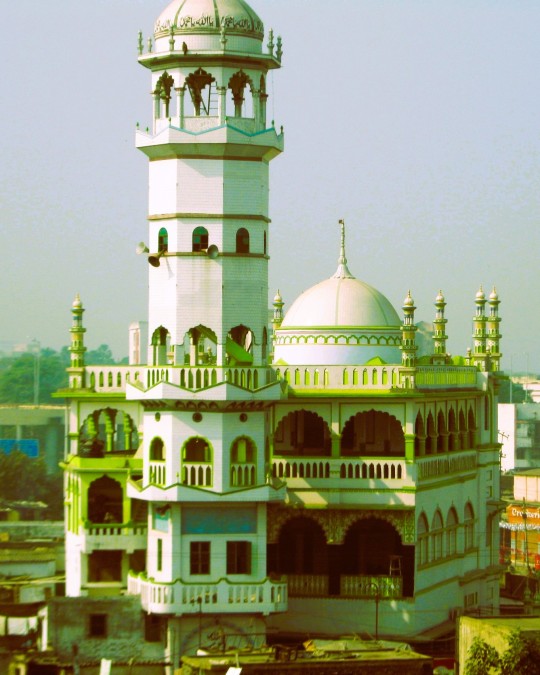
Jama Masjid Mosque, Patna, Bihar, India: Patna historically known as Pataliputra, is the capital and largest city of the state of Bihar in India. Patna also serves as the seat of Patna High Court. The Buddhist, Hindu, and Jain pilgrimage centers of Vaishali, Rajgir, Nalanda, Bodh Gaya, and Pawapuri are nearby and Patna City is a sacred city for Sikhs as the tenth Sikh Guru, Guru Gobind Singh was born here. The modern city of Patna is mainly on the southern bank of the river Ganges. Wikipedia
101 notes
·
View notes
Text
TRIPITAKA - the lost spiritual sequel to Cosmology of Kyoto was found

This post is a compilation of a series of tweets I have composed over a period of weeks during this summer.
For years, it was uncertain whether TRIPITAKA 玄奘三蔵求法の旅, by Soft Edge, had in fact ever been published. I remind the more absent-minded readers that this is the studio responsible for the mythical CD-ROM Cosmology of Kyoto, originally released in Japan in 1993, later published in the United States by Yano Electric in 1995. Knowledge of this their second and final production comes solely from the online CVs of producers Hiroshi Ōnishi and Mori Kōichi. No other information could be found online, and no actual copy of the game was known to exist.
Earlier this year, this disc surfaced at Yahoo Auctions. It sold for nearly $300 after 24 bids.

As suggested by its tile, which translates to Xuanzang Sanzo's Dharma-Seeking Journey, it was always assumed that the game illustrated episodes of the life of the celebrated Chinese Buddhist monk, particularly his 7th century pilgrimage to India. The captures printed on the back not only show a character highly reminiscent of the ancient scholar, they depict a variety of scenes taking place in China and India.
According to the severely incomplete archived version of PD Inc's website, the Japanese publisher responsible for this digipack, it was available for sale at museums hosting the 1999 Silk Road Journey To The West exhibition, which suitably matches the date printed on the back cover. However, this date presents yet another open question, as the Ōnishi-San and Kōichi-San bios both list it as a 1995 production.

The technical specifications may provide an enlightening clue, as they refer to Windows 95, 640x480px resolution and an 8-Bit color mode. This indicates that TRIPITAKA was indeed developed sometime between 1993 and 1995, although it was never published in the CD-ROM game circuit, certainly not in the immediate years after its development was completed. Combined with the data retrieved from the publisher's website, the edition shown here appears to have been produced solely for the occasion, as a means to diversify the museum shop catalog for this major exhibit, given the shared theme.
It would have been nearly impossible, had the program been in fact published in 1995, for a single copy to not have been spotted or mentioned online by the many Japanese collectors who have attempted to locate it for decades, unsuccessfully. On the other hand, a CD-ROM that was sold at a museum exhibit is likely to be purchased by visitors who were entirely unaware of the item's relevance as an elusive multimedia gem.
If a tangent is permitted here, both productions are inextricably linked with the museum space, and as far as I can speculate, Cosmology of Kyoto was, itself, also published with the intention of being made available in gallery stores in addition to computer game retailers. I say this because this was a production made possible by collaborative efforts including a variety of Japanese museums, to the extent these are referenced by name in the game's credits.
Considering the price at which the item was sold at auction, I was fairly certain that it was purchased by one such video game collector who knew exactly what they were bidding for. Later in July, I was able to locate the buyer and establish contact. Initially, the buyer was only able to produce this screenshot of the disc program launcher. The title reads "Cosmology of Asia", validating the claims that Soft Edge was in effect planning for series of edutainment software prior to its demise in the mid-90s.

In my second contact with the owner, I asked if he was available to produce a disc image and share it online for purposes of software preservation. The owner politely declined, stating that this was not something he was willing to do but offered to record the following gameplay video instead.
youtube
At a glance, the art style of Tripitaka is unsurprisingly similar to that of Cosmology. Most of its episodes occur during the day, whereas the latter was mostly played under the dark cover of night. The first scene depicts a dying Xuanzang reminiscing on his journeys in the company of a young chronicler. Structurally, both games are also nearly indistinguishable from one another, producing ample historical information for context, including detailed maps and chronologies.
TRIPITAKA was considered to be lost media for decades. As such, the importance of this footage could hardly be overstated. I would not hesitate to compare this development to the unearthing of Osamu Sato's Chu-Teng, the Eastern Mind sequel that was also deemed lost for many years, miraculously found during the time this blog was inactive.
I am delighted to have played a minor role in the unraveling of this thirty year old mystery, and can hardly contain my enthusiasm, as I now find myself equipped with sufficient information to produce a full post concerning a game about which I could not have written more than a sentence, just last year.
I would also like to thank the author of the @mendelpalace Tumblr for his timely alert regarding the Yahoo listing.
129 notes
·
View notes
Text
"Journey to the West," , is a classic Chinese novel written by Wu Cheng'en during the Ming Dynasty. It tells the story of the monk Xuanzang's pilgrimage to India to retrieve Buddhist scriptures.
He is accompanied by three disciples: Sun Wukong (the Monkey King), Zhu Bajie (Pigsy), and Sha Wujing (Sandy), who each have unique abilities and personalities.
The journey is filled with adventures, challenges, and supernatural encounters, symbolizing the quest for enlightenment.
西游记 : 西牛贺州/西牛货洲 Journey to the West
唐三藏 Tang Sanzang
孫悟空 Sun Wukong Monkey King
豬八戒 Zhu Bajie,
白龍馬 Bai Long Ma
三打白骨精 White Bone Spirit
Photo credit หมื่นเทพเทวะ








18 notes
·
View notes
Photo
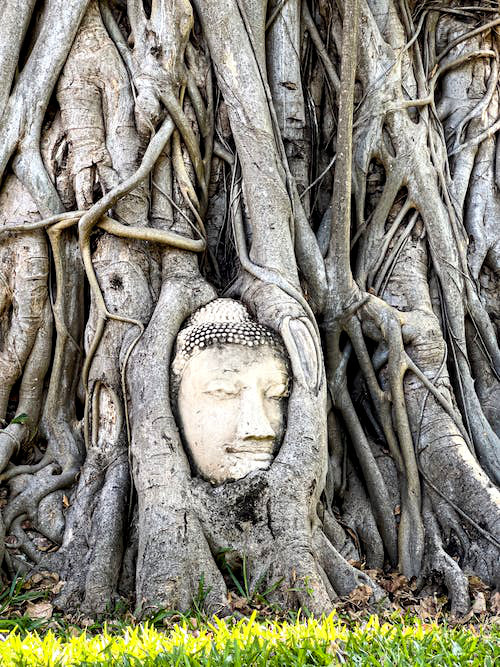
Legends and myths about trees
Trees in Buddhism (4)
Bodhi Tree (Ficus religiosa) – the "tree of awakening"
The Bodhi Tree ("tree of awakening"), also called the Mahabodhi Tree, Bo Tree, is a large sacred fig tree (Ficus religiosa) located in Bodh Gaya, Bihar, India. Siddhartha Gautama, the spiritual teacher of Buddhism, is said to have attained enlightenment under this tree around 500 BCE.
The original tree under which Siddhartha Gautama sat is no longer living, but the term "bodhi tree" is also applied to existing sacred fig trees.
It had been located in Bodh Gaya in present-day Bihar, India, but the tree was cut down due to the suppression of Buddhism in the India around the 5th CE. The decline of Buddhism in the Indian subcontinent coincides with the rise of Islam in that part of the world, especially the Islamic invasions that occurred in the late 12th CE.
However, as the lime tree grows strongly from cuttings, descendants growing from branches of the same tree were transplanted in various places. In recent years, a third generation Gautama Buddha Bodhi tree, grown from the original Bodhi tree in Anuradhapura, Sri Lanka, has been planted in the Mahabodhi temple in Bodh Gaya.
This tree, planted around 250 BCE, is a frequent destination for pilgrims, being the most important of the four main Buddhist pilgrimage sites.

木にまつわる伝説・神話
仏教の樹木 (4)
ゴータマ・ブッダの菩提樹 (聖なるイチジクの木) 〜「覚醒の木」
ゴータマ・ブッダの菩提樹は、仏教の開祖であるゴータマ・ブッダがその木の根元に座って悟りを得た菩提樹 (印度菩提樹)とその挿し木による子孫である。
菩提樹は、インドのビハール州ブッダガヤにある大きな聖なるイチジクの木で、「覚醒の木」とも呼ばれている。仏教の精神的な教師であるシッダールタ・ゴータマは、紀元前500年頃にこの木の下で悟りを開いたと言われている。
シッダールタ・ゴータマが座った元の木はもう生きていないが、「菩提樹」という言葉は、既存の神聖なイチジクの木にも適用される。
元の木は、現在のインドのビハール州のブッダガヤにあったが、5世紀頃のインドにおける仏教の弾圧により木は切られた。インド亜大陸における仏教の衰退は、同地域におけるイスラム教の台頭、特に12世紀後半に起こったイスラム侵攻と重なる。しかし、菩提樹は挿し木により強く育つので各地に同じ木の枝から育った子孫が移植された。近年になって、スリランカのアヌラーダプラにあった初代の菩提樹から育てられた、三代目のゴータマ・ブッダの菩提樹が、ブッダガヤの大菩提寺に植えられている。紀元前250年頃に植えられたこの木は、仏教の4大巡礼地の中でも最も重要な場所として、巡礼��が頻繁��訪れる場所である。
#trees#trees in buddhism#tree legend#tree myth#bodhi tree#sacred fig#buddha#enlightenment#decline of buddhism#history#philosophy#nature#art
153 notes
·
View notes
Text
Geography and landscape come into focus in the area of religious belief. Places of pilgrimage – tirthas and ziarats – are scattered all over the subcontinent. Pilgrimage crosses frontiers and carries cultural idioms from one place to another. Some sites are specific to a religion and retain their prominence as long as they can count on the patronage of that religion. But many more places acquire an association with the sacred and this brings about a cluster of religious connections, sometimes in succession and at other times simultaneously. Somanatha and its vicinity in Gujarat were home to places of worship revered by Vaishnavas, Buddhists, Shaivas, Jainas and Muslims. Patterns such as this cannot be explained by simply maintaining that there was religious tolerance, as there were expressions of intolerance at some places. Evidently there were other concerns that made such places attractive. Sacred sites could also be taken over by a winning religion – thus a megalithic site was appropriated for the building of a Buddhist stupa at Amaravati, a Buddhist chaitya was converted into a Hindu temple at Chezarla, a Hindu temple was converted into a Muslim mosque at Ajmer, and there are many more examples. Possibly some sites were thought to be intrinsically sacred and therefore attracted new religions, or perhaps taking over a sacred site was a demonstration of power. Sacred groves and trees, mountains , caves in hillsides, springs and pools are part of popular worship where landscape and belief come together. When they are appropriated by the powerful and the wealthy, then the landscape has to host monuments.
Early India: From the Origins to AD 1300 (2003), by Romila Thapar
44 notes
·
View notes
Note
"Of course Buddhists would reject to their religion being considered Hinduism? Some Hindus will claim Buddhism as a branch of their own religion to deny a unique Buddhist religious identity because India is plagued with fascists who want to create a Hindu ethnostate, and Buddhism's disappearance in India can be attributed to the assimilation of Buddhism into Hinduism."
I read this bit in an atla fandom post. For context op was basically responding to a twitter thread by breaking it down and the tweet compares hinduism and buddhism. op could've corrected the misinformation wo the bit about India but decided to spew hinduphobia in a completely unrelated post.
But I'm curious now, would you mind debunking the last bit about buddhism's disappearance in india
Okay hi, so in this post I addressed the differences between Hinduism and religions like Jainism, Buddhism and Sikhism.
Now onto the disappearance of Buddhism in India.
Buddhism was always a minority religion. It was observed by Fa Hien (5th ce) that while Buddhism was popular in places like Gaya and Kapilavastu, it wasn't very strong in other areas. Hiuen-tsang, a Chinese Buddhist traveller who visited India in the 7th ce, also noted that Buddhism was in decline. Along with other factors, Buddhism as a whole wasn't in great shape.
But the tipping point would be the Muslim invasions. They destroyed countless shrines and learning institutions, one of the biggest examples being Nalanda University. The last major Buddhist dynasty in India was the Pala dynasty. After the Muslims were done ravaging through the region, Buddhism was never the same again, because there was never a high enough leader to support the Sangha.
Obviously Buddhism hasn't completely disappeared from India. Places like Bodh Gaya and other pilgrimage sites still have a very strong Buddhist presence, and places in the northeast as well.
#this is not my best explanation as i've been extremely busy but i really wanted to answer this.#anon asks#answered#buddhism#corrections are welcome of course
8 notes
·
View notes
Text
The fantastic tale recounts the sixteen-year pilgrimage of the monk Hsuan-tsang (596-664), one of China's most illustrious religious heroes, who journeyed to India with four animal disciples in quest of Buddhist scriptures. For nearly a thousand years, his exploits were celebrated and embellished in various accounts, culminating in the hundred-chapter Journey to the West, which combines religious allegory with romance, fantasy, humor, and satire.


18 notes
·
View notes
Text
Sarnath - A holy Buddhist Pilgrimage
Nestled in the northeastern part of Varanasi, Uttar Pradesh, India, Sarnath is a revered religious city, commanding deep respect from Buddhist followers worldwide. This sacred destination is one of the four principal pilgrimages believed to be sanctified by Gautama Buddha himself, alongside Lumbini, the birthplace, Bodh Gaya, where enlightenment dawned, and Kushinagar, the site of Buddha's parinirvana. Read more at: Sarnath - A holy Buddhist Pilgrimage site in India


#Sarnath - A holy Buddhist Pilgrimage#Sarnath#holy Buddhist Pilgrimage#buddha#antique#buddhism#meditation#statue#blog
2 notes
·
View notes
Text
So Xiyouji is quite the humorous work but honestly the story’s history is extremely interesting and funny too on account of the MASSIVE character change the monk’s monkey protector went through over the centuries. I’ll let Hongmei Sun do the talking here, but beware of crude language below!
We “began” (as these stories were going around in folklore as well) with “Shihua [Full title Da Tang Sanzang qujing shihua] [which] is the first fictional account of Xuanzang’s journey in which the monk acquires a monkey attendant who functions as his guide and protector...According to Shihua’s account, the monk is on his way to acquire scriptures because he has received an imperial commission. On his way he meets the monkey figure, Hou Xingzhe (Monkey Acolyte), who becomes his guide and assistant. This story is filled with praises of the religious pilgrimage, paying its respects to Buddha and Buddhist teaching and eulogizing the peaceful places near the Western Heaven. Unlike the later versions, it is clear in the story that the success of the pilgrimage is based on Tripitaka’s deep understanding of Buddhist texts and great strength in his belief. The Tripitaka in later versions will reply on the assistance of Sun Wukong and gods from all parts of the universe to complete his journey.”
BUT THEN WE GET THIS:
“The six-part, twenty-four-act Zaju Xiyou ji is attributed to the fourteenth-century playwright Yang Jingxian, who lived during the late Yuan and early Ming periods. In the few hundred years between Shihua and Zaju, the story of ‘Journey to the West’ is not only more expanded, containing many of the stories that can be found later in Journey to the West, but the monkey figure in Zaju has grown into a character strikingly different from Hou Xingzhe. If Hou Xingzhe in Shihua is depicted as an advisor for Tripitaka, as respectable albeit mysterious deity, and a brave fighter, the monkey in Zaju is pictured as a rowdy clown, an untamed demon and ill-qualified Buddhist disciple... He also makes upfront ribald references about himself in this very first speech. The monkey’s demonic heart is indicated by his intention to eat Tripitaka immediately after Tripitaka rescues him from beneath the mountain. He never shows any seriousness about his business of pilgrimage, and his behavior does not improve during the journey. When the team arrives in India, he uses crude language in a conversation with an old lady about Buddhist ideas of the ‘heart’...The language that Xingzhe uses is the most vulgar of all, corresponding to his role as the clown. He amuses by making crude jokes and obscene references at most inappropriate occasions throughout the story. For instance, at a crucial moment of his life when Tripitaka meets him for the first time and tries to climb the mountain to have him released, the monkey starts a conversation about love and explains that Tripitaka’s motivation to save him is his lust for the monkey’s thin waistline, which resembles that of a desirable beauty. The monkey makes a reference to Agilawood Pavilion (Chenxiang Ting), a place that is known through Li Bo’s poems about the love affair between Emperor Tang Xuanzong and his consort Yang Guifei...When asked about his heart, Xingzhe comments that he used to have a heart, but he ‘shit it out’ because his ‘asshole’ is too wide.”
So this is a pretty major character change to say the least. But what’s this? WU CHENG’EN COMES IN WITH THE ABILITY TO COMPOSE A CLASSIC!!!
“In Journey to the West, Sun Wukong becomes a figure of more depth, someone who does not follow any prototype. He is still the guide and protector, resourceful for the journey, and knowledgeable about Buddhist teachings, but he is not the overly seriously Hou Xingzhe of Shihua. He is still funny and mischievous, creating trouble while pushing the narrative forward, but he is no longer the clown of Zaju. It seems that much of the vulgarity is redirected to the character of Zhu Bajie, which allows Sun Wukong to become a more introspective character who seeks to answer the question; Who am I?’ or, more accurately, engages the reader to ask the question...Compared to the earlier versions, the most significant change of Journey to the West is the change of protagonist. In Zaju, Tripitaka is still the main pilgrim on the journey and the main character in the entire play. Besides the incidents during the journey, the drama starts with Tripitaka’s legend and ends with Tripitaka’s accomplishment of the pilgrimage. In Journey to the West this structure is changed. The novel begins instead with a seven-chapter-long account of the monkey’s story, which is elaborated more than in any earlier account. It is here that Sun Wukong obtains his weapon, the Golden-Hooped Rod, which does not appear in the previous monkey stories...His actions, from stealing peaches from heaven, to making advances toward Princess Iron Fan, are all actions of a mischievous demon that needs to be controlled by the fillet. In Journey to the West, Sun Wukong finds his rod, and his experience—from the learning of skills, the testing of territory, the freedom of doing what he wants, to the kind of fun he enjoys no matter what he does and where he is—seems to be associated with, or represented by, the rod. Indeed, the narrative particularly makes the point that the monkey is meant to be the owner of the rod. The narrative also notes in one episode that without the rod he is no longer the monkey. The pleasure and freedom that Sun Wukong enjoys with the rod, or the Compliant Golden-Hooped Rod (Ruyi Jingu Bang) is only to be met by the fillet from the Buddha, given to him by Guanyin via the hands of Tripitaka. The fillet is not compliant to his will; instead, it controls him against his will. From the moment that Sun Wukong puts on the fillet, he is transformed from a free monkey—or a demon from the viewpoint of the Taoist and Buddhist deities—to a disciple of Tripitaka, a ‘compliant’ good pilgrim for the journey. In a sense, he becomes the ‘compliant rod’ for his master and Guanyin, since they can use the Tightening Fillet to force him to do what they want. However, the story is told mainly from the monkey’s point of view, as is established in the beginning chapters. Thus, the conflict between the rod of free will and the fillet that constrains the will becomes fundamental for the character Sun Wukong, providing the exigencies for his behavior.”
Su Wukong is a constantly transforming character, but the extreme levels of transformation he went through before Xiyouji was even published is a journey in of itself.
50 notes
·
View notes
Text

Accidentally deleted this but the earliest I can think of is in JTTWR’s article about a monkey disciple from 1230 CE.
And that this connection is how a monkey disciple gets added to The Story of How Tripitaka of the Great Tang Procures the Scriptures (13th-century CE) which isn't too huge of a timeframe.
However even earlier was in 1094-1102 CE when depictions of Xuanzang on his quest show him with some disciples. Some late-12th or early-13th-century CE murals. And also a figure of Monkey Pilgrim from 1237 CE. Also a late-12th-century ritual scrolls portraying the famed 500 Arhats.

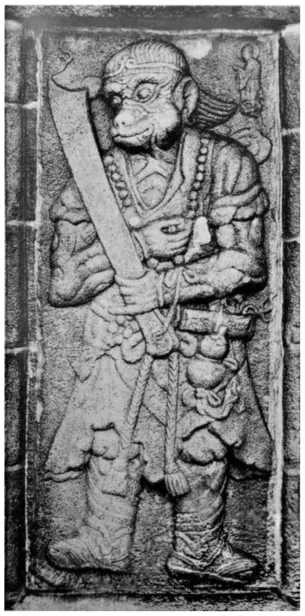

While these are all physical evidence that has survived time throughout history it should also be noted that it makes it near impossible to pinpoint when he was being created within oral history.
But there is also the argument on how Hanuman and Wuquizi can be connected to Wukong's creation. These figures today are seen as their own entities and thus while considered to be huge inspirations aren't considered to be the Same as Wukong.
There is a great article talking about that too!
19 notes
·
View notes
Text
Holidays 7.16
Holidays
Accountant and Auditor Day (Ukraine)
Artificial Intelligence Appreciation Day
Assata Shakur Day
Atomic Bomb Day
Catcher in the Rye Day
Closet Space Appreciation Day
DC Day
Dixie Cup Day
Elderly Women Day (Kiribati)
Engineer’s Day (Honduras)
Festival of Convivial Tools
Fiesta de La Tirana (Tarapacá Region, Chile)
Guinea Pig Appreciation Day
Harela (Uttarakhand, India)
Holocaust Memorial Day (France)
International Disability Awareness Day
International Drag Day
International Juggling Day
Islamic Calendar Day
Lady of Carmen Day (Chile)
La Paz Day (Bolivia)
National Atomic Veterans Day
National Change Your Font Day
National D.R.E.S.S. Syndrome Day
National Emily Day
National Geordie Day (UK)
National Jerry Day
National Peace Day (Dia de la Paz; Bolivia)
National Stick Shift Day
National Take the Stairs Day
National Wedding Invitation Day
No Kissing Day
Order of the Arrow Day (BSA)
Parking Meter Day
Parks Day (Canada)
Reading Together Day (UK)
Rural Transit Day
716 Day
Talk to a Telemarketer Day
Tare Day (French Republic)
Trinity Test Day
Urs Shah-I-Hamdan Sahib (Kashmir, India)
Val d’hie Roundup Anniversary Day
World PR Day
World Snake Day
World Wizkid Day (Nigeria)
Food & Drink Celebrations
Fresh Spinach Day
Hot Coal Chicken Day (Peru)
Hot Dog Night
Ice Cream Cone Day
National Cherry Day (UK)
National Corn Fritter Day
National Funnel Cake Day
National Personal Chef Day [also 2.26]
Independence & Related Days
Custosia (Declared; 2017) [unrecognized]
La Paz Day (Bolivia)
Manu’s Cession Day (American Samoa)
Ozamiz City Charter Day (Philippines)
3rd Tuesday in July
National Children’s Book Day (Philippines) [3rd Tuesday]
Taco Tuesday [Every Tuesday]
Weekly Holidays beginning July 16 (3rd Week of July)
Prime Days (Amazon) [thru 7.17]
Festivals Beginning July 16, 2024
Beanpole Days (Pequot Lakes, Minnesota) [thru 7.17]
Fiesta Topeka (Topeka, Kansas) [thru 7.20]
Les Escales du Cargo (Arles, France) [thru 7.21]
Feast Days
Andrea del Sarto (Artology)
Asalha Puja Day (Buddhist Lent begins)
Athenogenes (Christian; Martyr)
Bobby Henderson Day (Pastafarian; Saint)
Charles Sheeler (Artology)
Day of Erzulie Dantor (Starza Pagan Book of Days)
Dr. Doom Day (Church of the SubGenius; Saint)
Display of the Embarrassing Swimsuits (Church of the SubGenius)
Elembiuos (a.k.a. Clam-time; Celtic Book of Days)
Eustathius of Antioch (Christian; Saint)
Feast of the Commemoration of Our Lady of Mount Carmel (Carmelite Order; Christian)
First Sermon of Lord Buddha (Bhutan)
Flight of Muhammad (the Hegira; 622)
Fulrad (Christian; Saint)
Gergetoba (Day of Spiritual Love; Georgia)
Gondulphus of Tongeren (Christian; Saint)
Great Schism Anniversary Day (1054)
Harela (Day of Green; Hinduism)
Hejira (First Day of Islamic Calendar; 622) [original date]
Helier (a.k.a. Elier; Christian; Saint)
Immolation Day (Ancient Greece)
Jean-Baptiste-Camille Corot (Artology)
Joshua Reynolds (Artology)
Mary Magdalen Postel (Christian; Saint & Virgin)
Our Lady of Mount Carmel (Christian)
Petal-Hopping for Non-Starters (Shamanism)
Phoebe Cates Day (Humanism)
Reineldis (Christian; Saint & Virgin)
Robert Sheckley (Writerism)
Rotary Doozer (Muppetism)
Saut d’Eau Waterfall Pilgrimage (Voodoo; Haiti; Everyday Wicca)
Skip This Day Day (Pastafarian)
Solstitium XI (Pagan)
Tony Kushner (Writerism)
The Troubadours (Positivist; Saint)
Vardavar (Pagan Prank Day; Armenia) [14 Weeks after Easter]
Zoot (Muppetism)
Islamic Lunar Holidays
Ashura (Islamic) [Begins at Sundown; Muharram 9-10] (a.k.a. ...
Achoura (Algeria)
Ashorra (Parts of India)
Ashoura (Lebanon)
Ashura Holiday (Afghanistan, Bahrain, Iraq, Pakistan, Somalia)
Muharram (Parts of India)
Remembrance of Muharram
Tamkharit (Senegal)
Tamxarit (Gambia)
Tasoua Hosseini (Iran)
Tasu’a
Yaum-e-Ashur (Pakistan)
Yawmul Ashura (Gambia)
Lucky & Unlucky Days
Butsumetsu (仏滅 Japan) [Unlucky all day.]
Prime Number Day: 197 [45 of 72]
Premieres
Ain’t No Mountain High Enough, by Diana Ross (Song; 1970)
Alice’s Restaurant Massacree, by Arlo Guthrie (Song; 1976)
Akira (Anime Film; 1988)
Ant-Man (Film; 2015)
Barney Bear and the Uninvited Pest (MGM Cartoon; 1943)
The Big Bite (Woody Woodpecker Cartoon; 1966)
The Blair Witch Project (Film; 1999)
The Catcher in the Rye, by J.D. Salinger (Novel; 1951)
Die Entführung aus dem Serail (The Abduction from the Seraglio), by Wolfgang Amadeus Mozart (Opera; 1782)
Dragon Around (Disney Cartoon; 1954)
Drop Dead Gorgeous (Film; 1999)
Eyes Wide Shut (Film; 1999)
False Hare (WB LT Cartoon; 1964)
Free Willy (Film; 1993)
From Up on Poppy Hill (Studio Ghibli Animated Film; 2011)
George of the Jungle (Film; 1997)
The Half-Blood Prince, by J.K. Rowling (Novel; 2005) [Harry Potter #6]
Happy Birthdaze (Fleischer/Famous Popeye Cartoon; 1943)
Hocus Pocus (Film; 1993)
Inception (Film; 2010)
Indian Serenade (Color Rhapsody Cartoon; 1937)
Lost and Foundry (Fleischer Popeye Cartoon; 1937)
The Moonstone, by Wilkie Collins (Novel; 1868)
Mouse and Garden (WB LT Cartoon; 1960)
The Office Boy (Ub Iwerks Cartoon; 1932)
Once A Day, by Connie Smith (Song; 1964)
Piano Sonata, by Béla Bartók (Piano Sonata; 1927)
Poison Ivy, recorded by The Coasters (Song; 1959)
Pom Poko (Studio Ghibli Animated Film; 1994)
Punch (UK Weekly Satire Magazine; 1842)
Schmigadoon! (TV Series; 2021)
Sex & Drugs & Rock & Roll (TV Series; 2015)
Space Jam: A New Legacy (Animated Film; 2021)
Space Race (Video Game; 1973)
Stargate: Atlantis (TV Series; 2004)
The Timid Pup (Color Rhapsody Cartoon; 1940)
Topper (Film; 1937)
What a Lion (MGM Cartoon; 1938)
Today’s Name Days
Carmen, Irmgard, Maria (Austria)
Yulian, Yuliana, Yuliya (Bulgaria)
Elvira, Karmela (Croatia)
Luboš (Czech Republic)
Tychos (Denmark)
Rein, Reinhold, Reino, Reinu, Reinut, Rinaldo, Ronald (Estonia)
Reino, Rene (Finland)
Elvire (France)
Carmen, Irmgard (Germany)
Valter (Hungary)
Maria, Vitaliano (Italy)
Hermīne, Rasulite (Latvia)
Danguolė, Faustas, Vaigaudas (Lithuania)
Sanna, Susanne (Norway)
Andrzej, Benedykt, Dziersław, Dzierżysław, Eustachiusz, Eustachy, Faust, Maria Magdalena, Marika, Ostap, Ruta, Stefan (Poland)
Drahomíra (Slovakia)
Carmen (Spain)
Reine, Reinhold (Sweden)
Ruth, Valentina, Valia (Ukraine)
Carmel, Carmela, Carmelo, Carmen, Shelby, Sherman, Sherwood (USA)
Carma, Carmel, Carmela, Carmelita, Carmella, Camelo, Carmélo, Carmen, Carmencita, Carmi, Carmie, Carmina, Carmine, Karmen, Phoebe (Universal)
Today is Also…
Day of Year: Day 198 of 2024; 170 days remaining in the year
ISO: Day 2 of Week 29 of 2024
Celtic Tree Calendar: Tinne (Holly) [Day 10 of 28]
Chinese: Month 6 (Xin-Wei), Day 11 (Xin-Si)
Chinese Year of the: Dragon 4722 (until January 29, 2025) [Wu-Chen]
Hebrew: 10 Tammuz 5784
Islamic: 9 Muharram 1446
J Cal: 18 Red; Foursday [18 of 30]
Julian: 3 July 2024
Moon: 75%: Waxing Gibbous
Positivist: 1 Dante (8th Month) [The Troubadours]
Runic Half Month: Ur (Primal Strength) [Day 8 of 15]
Season: Summer (Day 27 of 94)
Week: 3rd Week of July
Zodiac: Cancer (Day 26 of 31)
Calendar Changes
Dante (Modern Epic Poetry) [Month 8 of 13; Positivist]
2 notes
·
View notes